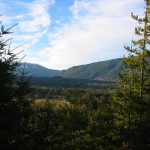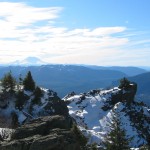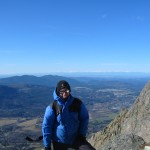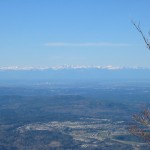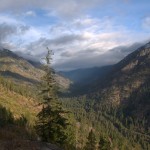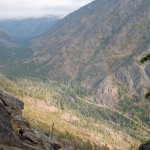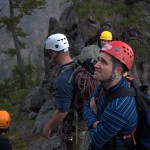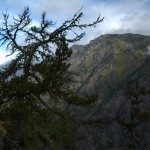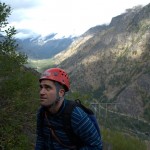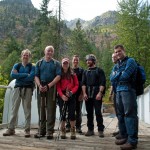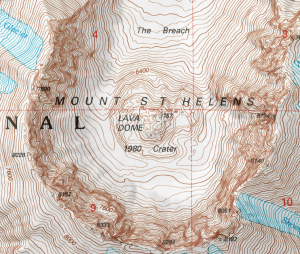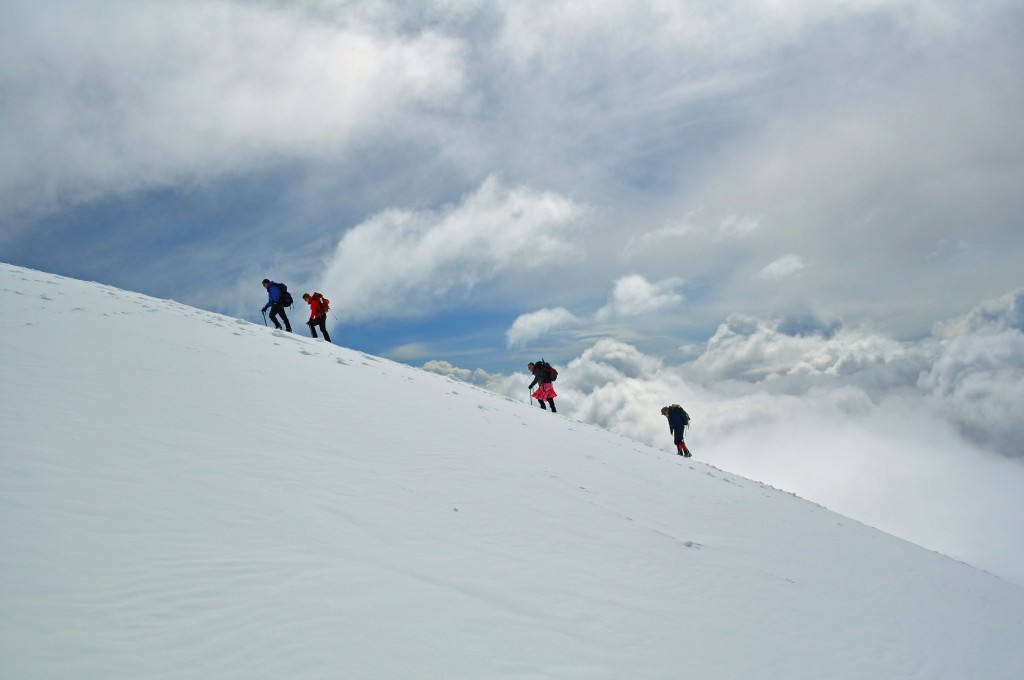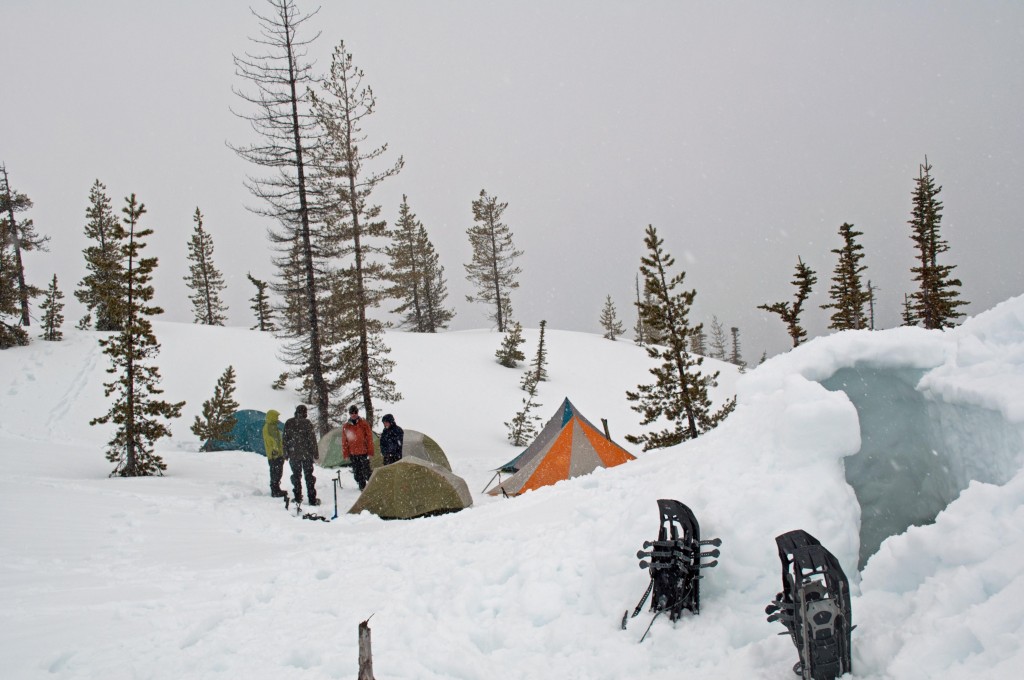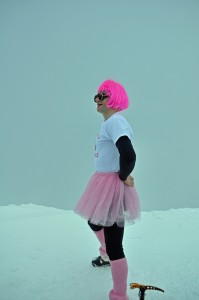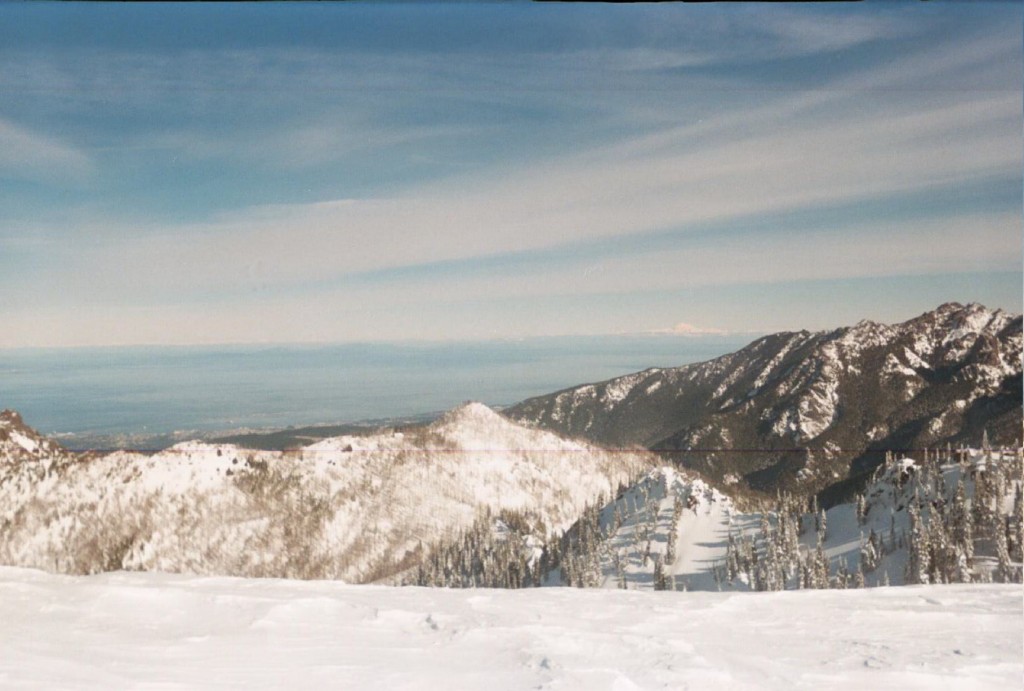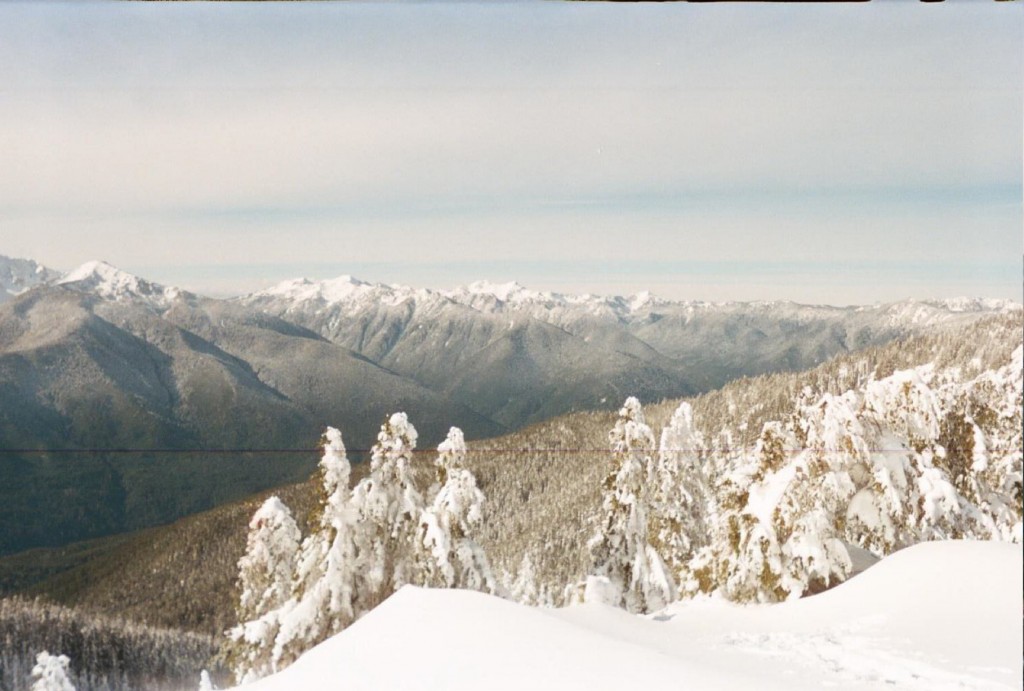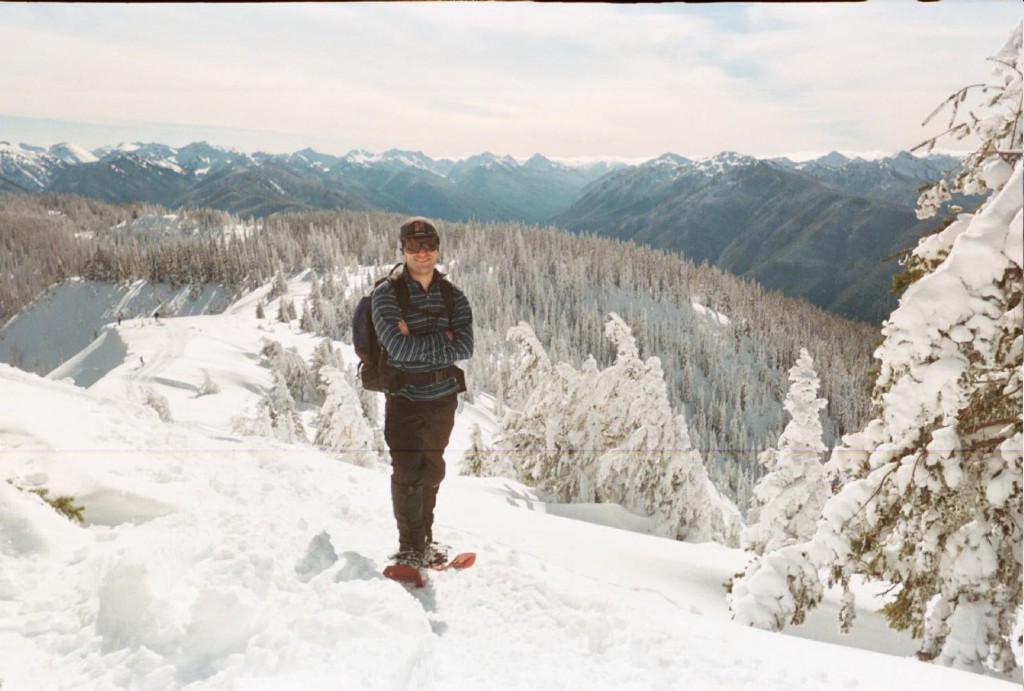When I mention I had an interesting experience with a cougar, most people ask which bar I went to. No, this was a cougar in the original sense of the word, Puma concolor, the “largest of the small cats“, according to Wikipedia… They’re called small because they share some characteristics with pet cats – they can’t roar, but they purr, hiss and (I guess) meow like the familiar Felis catus. At any rate, since when did the other meaning of the word become #1 on Google?
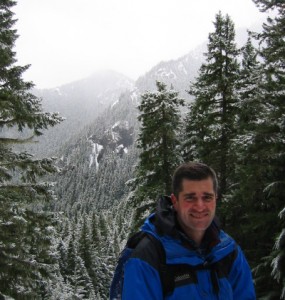 We left early Sunday morning for Quilcene, a small town on the western side of Hood Canal. From there, you drive up tiny Forest Service roads into the Olympics. Mount Townsend is a popular hike during the summer months, known for its spectacular views. In the winter, it’s nearly deserted, but has fine snowshoeing.
We left early Sunday morning for Quilcene, a small town on the western side of Hood Canal. From there, you drive up tiny Forest Service roads into the Olympics. Mount Townsend is a popular hike during the summer months, known for its spectacular views. In the winter, it’s nearly deserted, but has fine snowshoeing.
As with the week before, the weather was foggy with some light precipitation (snow at that elevation), a couple degrees above freezing. It’s beautiful but really quite remote, so it’s imperative to prepare carefully for such a trip, even if just a day hike. Not wanting to test the ice handling conditions of our Prius on these remote roads, we parked about two miles below the trailhead and went from there on snowshoes.
The snow was crusty and old, but it seemed like there was an almost continuous dusting of light powder, so the trees were mostly white. We went about half way up the side of Mt. Townsend and turned around. At the trailhead, we noticed fresh prints in the newly fallen snow. Looking carefully, these looked just like cat paws, except they were huge! There were no claw marks (cats have retractable claws, unlike dogs). We surmised that a cougar had been there within the time we were up on Mt. Townsend – a 2-hour interval.

Photographer: Steve Mestagh
Even more surprising, about 100 feet away were fresh drops of blood. These were right next to our tracks coming in, so we were sure this had happened while we were hiking. We still had a good two miles to go back to our car, and there was nobody else around. Even though rationally you know the chances of being attacked by a cougar (particularly with two people) are vanishingly small, you’re gripped with an animal fear knowing it is so close.
It’s said that those who have been attacked had a sense beforehand that they were being stalked. It was almost like a dream – you stop, you listen, but all you can hear is the wind in the trees. Soon we saw additional fresh tracks of another snowshoer and his dog. So at least we weren’t quite as isolated anymore. If you read the Forest Service posters on cougars, they’re a bit hard to swallow (“If attacked, fight back!”). You’re not supposed to run, as then it might perceive you as prey. Of course, the chances of us, with our loud snowshoes, coming on a cougar by surprise seems unthinkable so I figured if we were going to encounter one, it would be coming up from behind.
Does this fear seem unreasonable? The mind overemphasizes highly unlikely but spectacular risks (cougar attacks) but underemphasizes far more likely but mundane risks (car collision). Yet there it was. That must be what a rabbit feels all the time – you’re the prey. Every unexpected noise is a threat, the cloudy sky seems sinister, you long for the comfort of others. The irony is that, but for the snow, we never would have known.
Cougars are magnificent animals – one of the handful of big predators remaining in North America. You think of big cats in the Amazon, or in the African plains – not in your local mountains. But there are parts of the Northwest that are still wild where these creatures live. I’d love to catch a glimpse of one someday.
